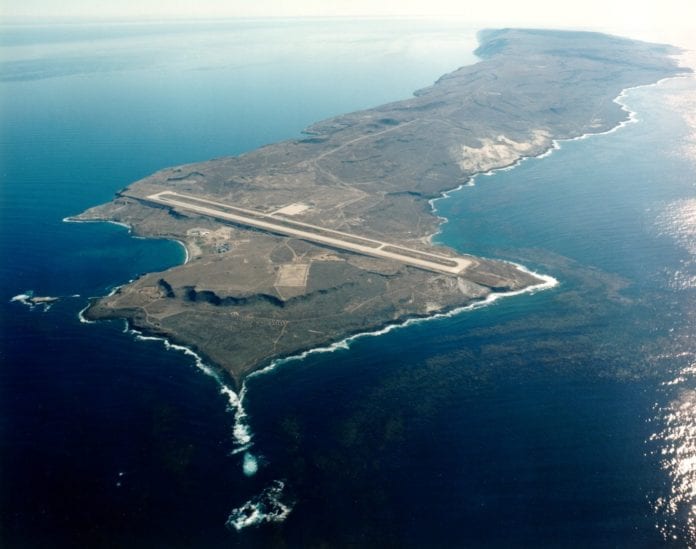With a small-cell installation at Naval Base Coronado, Verizon bolstered cellular connectivity at a sprawling military installation which includes an island 70 miles off-shore, and successfully navigated the challenges of putting commercial wireless infrastructure on the grounds of a military base.
Verizon recently highlighted the installation of small cells at Naval Base Coronado, which includes the Naval Air Station North Island (NASNI), Naval Amphibious Base (NAB) and San Clemente Island (SCI). It is one of the first installations of its kind in the region and will lay the groundwork for the eventual expansion of 5G there, according to Verizon.
“It’s been a multi-year process to get to this,” said Randy Eastman, who manages the partnership of Department of Defense business at Verizon. He said that Verizon has been working with the United States Navy in the Southwest region to improve wireless coverage at their installations, and that the Naval Base Coronado project will serve as an example for other military installations.
Even for a telecom company familiar with complex siting rules and requirements, Eastman said, it is a particularly long and complicated process to put any kind of infrastructure within the gates of a military installation. Previously, Eastman said, Verizon served the base from outside its borders — but a partnership with the U.S. Navy helped the carrier to put the project together and deploy it in a much shorter timeframe than is typical. Discussions for the deployment began in 2016, and it is now deployed; that compares to other military bases in Southern California where wireless infrastructure projects have dragged on for half a dozen years or longer, according to Eastman. Verizon was even able to get a temporary truck-based, satellite-backhaul deployable on-location within a few months as it worked to get the full deployment in place.
Steve Lamb, director of engineering for the southern California market for Verizon, noted that one of the physical challenges of the project was San Clemente Island. It is about 70 miles off the coast of California. Access is tightly controlled, presenting a challenge just to get equipment to the site. But wireless access is very important for the personnel who work and/or live on the island; Eastman said that one of the biggest complaints from sailors and other Department of Defense personnel was the lack of wireless service.
The network supports government users both in day-to-day operations and in maintaining their personal connections to the mainland: not just phone calls, but distance learning.
The network now “gives them the ability to use the service like they’re used to,” Eastman added.
Verizon deployed 46 small cells as well as macro sites to cover Naval Base Coronado, Lamb said. Backhaul from the macro cells on San Clemente Island was accomplished via microwave link, and those cells fed into the base where a small cell network was a more suitable RF and physical match to the environment, Lamb said.
“There are cell sites on bases, but they are very few and far between,” said Lamb. “It’s a very cumbersome process to be enabled to get commercial systems on bases” due to security checks and other processes — only Department of Defense personnel are allowed on San Clemente Island, for instance. A barge provides transportation to and from the island, but only goes out a limited number of times each week — so even getting the equipment on-location was a logistics feat.
Lamb said that while the architecture of the deployment is similar to one that would be deployed in an urban space, the rules, regulations and process make it more difficult than an urban deployment.
“It honestly took a major effort on both sides to be able to make it through that process,” he said.

